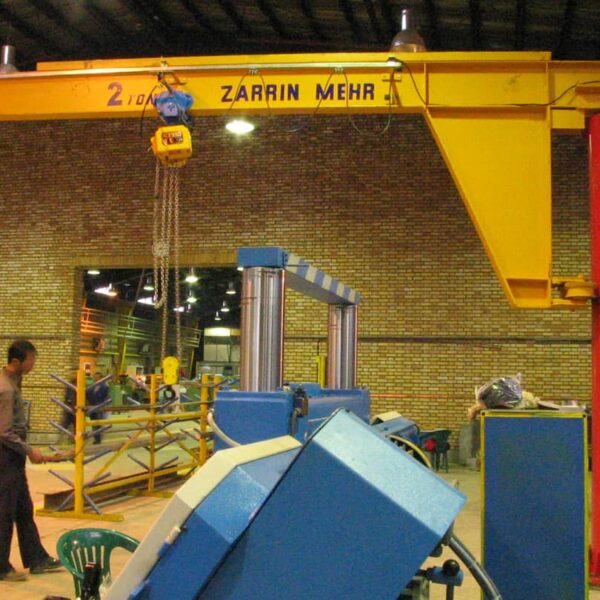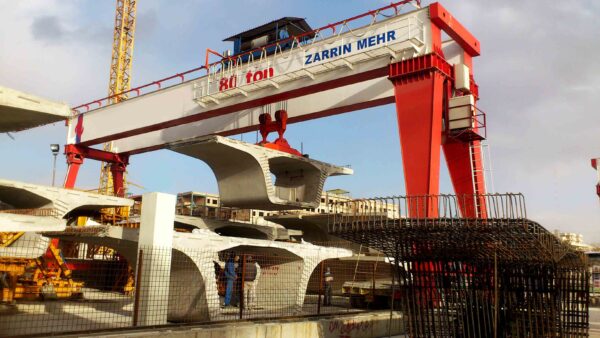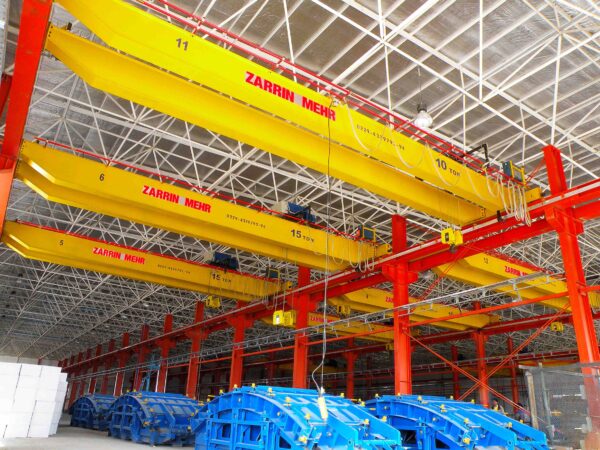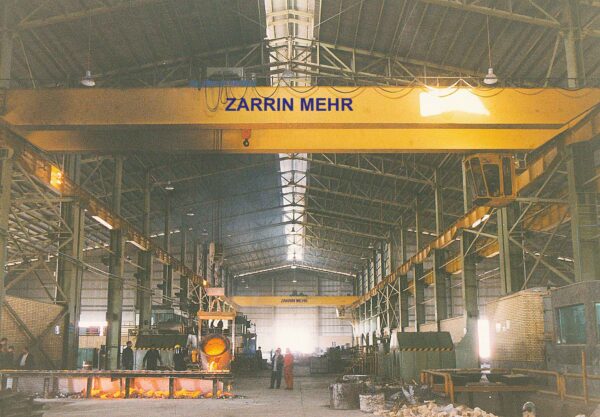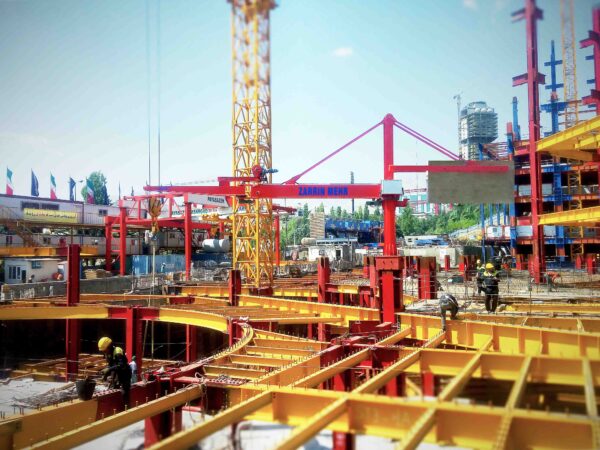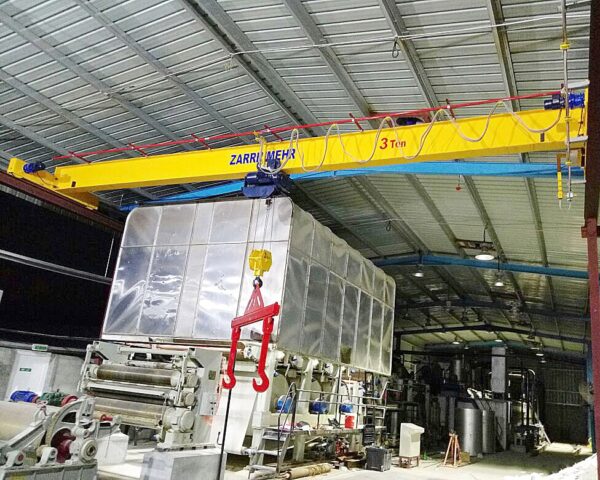Unmatched Expertise, Proven Results
With a rich legacy spanning 30 years, we don’t merely talk about quality; we embody it. Our extensive portfolio showcases our unwavering commitment to excellence, making us a trusted name both locally and globally.
Years of Experience
Successful Projects
International projects
Fields of Activity
Next Generation of Material Handling Solutions
Discover our premium range of electric hoists and electric winches, engineered to exceed industry standards for both quality and safety. Complemented by our exceptional after-sales support, we ensure an elevated user experience throughout the lifecycle of our products.
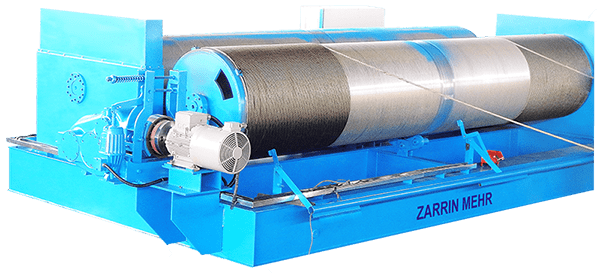
Recent projects
With a portfolio of over 322 successfully executed projects, our expertise encompasses a wide array of machinery and equipment. This includes but is not limited to gantry cranes, jib cranes, electric winches, electric hoists, and overhead cranes, as well as metal forming and cutting technologies.
Recent Posts
What is Jib Crane?
What materials is the gantry crane made of?
What is the speed of the hoist and trolley on a gantry crane?
Is the gantry crane mobile or stationary?
What are the gantry crane’s dimensions?
How is the gantry crane powered?
What type of hoist comes with the gantry crane?
What is the total cost of gantry crane ownership?
Is the gantry crane customizable?
Looking to purchase a crane?
Frequently Asked Questions (FAQs)
What is the expected timeline for building an overhead crane?
The timeline for building an overhead crane can vary significantly depending on several factors. Here’s a general overview of what might influence the timeline and the stages involved:
- Design and Engineering Phase: This initial stage involves determining the specifications of the crane, such as lifting capacity, span, lift height, speed, and duty cycle. Custom designs take longer than standard models. This phase could take anywhere from a few weeks to several months.
- Procurement of Materials: Once the design is finalized, sourcing the necessary materials begins. The availability of materials can affect the timeline. This could take several weeks to a few months.
- Manufacturing: The manufacturing phase includes fabricating and assembling the crane components. For standard cranes, this might take a few weeks to a couple of months. For custom or very large cranes, this phase could extend to several months.
- Quality Control and Testing: After manufacturing, the crane undergoes rigorous testing to ensure it meets safety and operational standards. This process can take a few days to a few weeks.
- Transportation and Installation: Transporting the crane to the site and installing it can vary in duration. Simple installations might take a few days, while complex installations could take several weeks.
- Commissioning and Training: Finally, the crane needs to be commissioned, and the staff needs to be trained on its operation. This could take from a few days to a couple of weeks.
In summary, for a standard overhead crane, the entire process from design to commissioning might take anywhere from a few months to half a year. For a custom or particularly complex crane, the timeline could extend up to a year or more.
At Zarrin Mehr Cranes, we believe in transparent processes. That’s why we implement a detailed action plan for each crane manufacturing project. Our approach ensures that both our team and our clients are on the same page regarding project milestones and completion dates. This collaborative strategy is key to delivering your overhead crane project efficiently and on schedule.
Who does Zarrin mehr Cranes manufacture gantry cranes for?
We cater to a broad spectrum of businesses, from start-ups to large-scale enterprises. Our gantry cranes are designed to meet the high-capacity needs of substantial industrial, construction, and shipping operations. While we specialize in larger projects, we welcome clients of all sizes, offering the same commitment to quality and performance across the board.
Since when has Zarrin mehr Cranes been in operation, and who have you worked with?
We have proudly been building overhead cranes since 1995. Our client list is extensive and varied, including small start-up companies and large multinational organizations. We have fostered growth and provided solutions across a global clientele, from Iran to other regions such as the Middle East, European countries, Africa, the Americas, and more.
Does the size of my company affect the level of service I receive?
Absolutely not. At Zarrin mehr Cranes, every client is valued equally. We are committed to providing the same high standards of service, efficiency, and safety to all our clients, regardless of their company size or the scale of their crane manufacturing project. Your business’s size is the perfect fit for us—no project is too small or large for our dedicated team.
Can Zarrin mehr Cranes assist in redesigning my existing overhead crane?
Yes, our team is well-versed in revamping overhead cranes. Understanding that such a task can seem overwhelming, we offer full support throughout the redesign process. Our goal is to enhance your crane’s performance, ensuring the new design outperforms the original while also providing you with the knowledge and tools to advance your business operations. The process typically involves the following steps:
- Assessment: We would start by conducting a thorough assessment of your current crane system to understand its capabilities, limitations, and the context in which it operates.
- Requirements Gathering: We’ll discuss your current and future needs, including capacity, lifting height, span, speed, control methods, and any specific challenges you’re facing with the existing system.
- Design Proposal: Based on the assessment and your requirements, our engineers would develop a redesign proposal. This could involve structural modifications, upgrading components, or integrating new technologies to enhance performance and safety.
- Engineering Analysis: We would perform detailed engineering analysis to ensure that the proposed redesign meets all regulatory standards and safety requirements.
- Implementation Plan: A detailed plan would be created for the implementation of the redesign, including timelines, cost estimates, and any anticipated downtime required for the work.
- Execution: Our team would oversee the execution of the redesign, ensuring minimal disruption to your operations.
- Testing and Commissioning: After the redesign is completed, rigorous testing would be conducted to confirm that the crane operates as intended. Once testing is successful, the crane would be commissioned and put back into service.
- Training: If the redesign includes new controls or operational changes, we would provide training to your operators and maintenance staff.
To move forward, we would need to arrange a consultation to discuss your specific requirements and to view the existing crane setup.
Can you work with international clients?
Yes, at Zarrin mehr Cranes, we specialize in working with international clients. Our experience extends globally, and we use modern communication tools like Skype, Zoom, and Microsoft Teams for seamless interactions and coordination. We offer remote consulting, design, and engineering services, and adapt our implementation strategies to meet local standards and regulations.
Our expertise in constructing overhead gantry, and jib cranes is backed by a commitment to quality and client satisfaction. We handle the challenges of international projects effectively, ensuring timely delivery within budget. If you have a specific project in mind, please contact us to discuss how we can contribute to your success.
Do you offer ongoing technical support for our new crane after its installation?
Yes, we provide comprehensive ongoing technical support following the installation of your new crane. Our dedicated team of experts is available to ensure your crane operates at peak efficiency and safety. We offer various support services, including routine maintenance, emergency repairs, and technical guidance to address any issues you may encounter. Our commitment to your satisfaction extends well beyond the initial installation, as we strive to maintain a supportive relationship through the entire lifecycle of your crane. Your operational success is our priority, and we are here to assist you every step of the way.
What lifting capacity should my electric hoist have?
The lifting capacity of your electric hoist should be determined by several factors, including the maximum weight you plan to lift, the frequency of use, and safety considerations. Here are some guidelines:
- Maximum Load: The most important factor is the heaviest load you plan to lift. Your hoist should have a capacity that exceeds this weight. It’s a good practice to choose a hoist with a capacity at least 20-25% more than your maximum load to account for any unforeseen overloading.
- Frequency of Use: If you’re using the hoist frequently or for prolonged periods, it might be wise to opt for a higher capacity model. Frequent lifting near the hoist’s maximum capacity can wear it out more quickly.
- Safety Margin: Always consider a safety margin. This means that if you expect to lift loads that are close to the hoist’s maximum capacity, it’s safer to choose a hoist with a higher capacity to ensure reliability and safety.
- Type of Load: Consider the type of loads as well. If the loads are bulky, uneven, or awkwardly shaped, a higher capacity hoist may be necessary.
- Working Conditions: If the hoist will be used in harsh environments (like extreme temperatures, corrosive atmospheres, etc.), a more robust hoist with a higher capacity might be needed.
- Future Needs: Think about potential future needs. If your lifting requirements might increase, investing in a hoist with a higher capacity now could be more cost-effective in the long run.
- Manufacturer’s Ratings and Recommendations: Always adhere to the manufacturer’s ratings and recommendations. Using a hoist for loads heavier than its rated capacity is dangerous and can lead to equipment failure.
Remember, safety should be your top priority. It’s always better to have more capacity than you currently need than to risk overloading your hoist. If you’re uncertain, consider seeking tailored advice from our team of experts.
What’s the difference between a gantry crane and an overhead crane?
Gantry cranes and overhead cranes are both types of cranes used in industrial and construction settings, but they have distinct features and applications.
- Structure and Design:
- Gantry Crane: A gantry crane consists of a bridge beam supported by legs on both sides, running on ground-level rails. It is essentially a bridge crane on wheels and can be used outdoors or indoors. The legs can be fixed or adjustable in height.
- Overhead Crane: Also known as a bridge crane, it consists of parallel runways with a traveling bridge spanning the gap. The lifting component, or hoist, moves along the bridge. This type of crane is typically found in industrial environments and runs on elevated tracks.
- Mobility:
- Gantry Crane: More mobile and adaptable as it does not require a built-in runway system. It can be moved and used in different locations, making it ideal for outdoor applications like shipyards, rail yards, or construction sites.
- Overhead Crane: Generally fixed in location as it runs on an overhead runway system. This makes it suitable for indoor operations where it can utilize existing building structures for mounting.
- Load Capacity and Size:
- Gantry Crane: Usually has a lower load capacity compared to overhead cranes. However, there are heavy-duty models available. Gantry cranes come in various sizes, including small workstations and large outdoor models.
- Overhead Crane: Typically has a higher load capacity and is more suitable for heavy industrial applications. The design allows for larger spans and heavier lifting.
- Installation and Cost:
- Gantry Crane: Easier and less expensive to install since it doesn’t require a runway structure. Portable models are quite cost-effective.
- Overhead Crane: Installation can be more complex and costly, as it often requires modifications to existing structures to support the crane’s runway system.
- Application:
- Gantry Crane: Versatile and used in a variety of settings, including outdoors. They are ideal for applications where the crane needs to be moved to various workstations.
- Overhead Crane: Best suited for repetitive, heavy lifting tasks in a fixed location, such as manufacturing plants, warehouses, or assembly lines.
In summary, the main differences lie in their structure and mobility. Gantry cranes are more mobile and versatile for outdoor use, while overhead cranes are fixed and more suited for indoor, repetitive lifting tasks in a confined space.
What are typical applications for gantry cranes?
Gantry cranes are versatile and can be used in a wide range of applications due to their mobility and adaptability. Typical applications for gantry cranes include:
- Shipyards and Dockyards: For lifting heavy items like ship parts or containers. Gantry cranes are often used in the construction, repair, and maintenance of ships.
- Rail Yards: For loading and unloading cargo from railcars, including containers and heavy machinery.
- Construction Sites: Particularly useful in bridge construction, highway construction, and large-scale building projects for moving heavy materials like steel beams, concrete blocks, and large equipment.
- Manufacturing Facilities: For moving large and heavy products or components, especially in industries that manufacture heavy equipment, vehicles, or large machinery.
- Warehouses and Storage Facilities: Especially in outdoor storage areas for stacking and moving heavy goods.
- Steel Mills: For handling steel products like coils, plates, and bars.
- Precast Concrete Plants: For lifting and moving large precast concrete products.
- Power Plants: For maintenance tasks and handling heavy equipment during the construction and operation of the plant.
- Workshops and Small Businesses: Small gantry cranes are used in smaller workshops for a variety of tasks, including lifting engines or heavy components.
- Outdoor Projects: Due to their ability to be easily moved and set up in different locations, they are ideal for outdoor projects like mining, road construction, and large-scale landscaping projects.
Gantry cranes are valued for their flexibility, as they can be customized to fit specific needs and can operate in areas where overhead cranes are not feasible. They are particularly useful in outdoor applications or in facilities where permanent crane installation is not possible or practical.
Can jib cranes rotate?
One of the defining features of many jib cranes is their ability to rotate. This rotation can vary in range based on the design of the crane:
- Degrees of Rotation:
- Full Rotation (360 Degrees): Some freestanding and mast-type jib cranes can rotate a full 360 degrees. This provides maximum flexibility in moving materials around a circular area.
- Less than 360 Degrees: Wall-mounted and some pillar-mounted jib cranes have a limited range of rotation, typically up to 180 to 270 degrees. The range is restricted due to the mounting structure (like a wall or column) that partially obstructs the rotation.
- Types of Jib Cranes and Their Rotation:
- Freestanding Jib Cranes: These cranes are bolted to the floor and do not require any support from the building. Many freestanding jib cranes can rotate up to 360 degrees.
- Wall-Mounted Jib Cranes: Attached to a wall or a vertical structure, these cranes usually have a limited rotation range, often up to 180 to 270 degrees, due to the obstruction of the wall.
- Mast-Type Jib Cranes: These can be either full cantilever or drop cantilever; they can offer full 360-degree rotation but are sometimes limited by the surrounding infrastructure.
- Articulating Jib Cranes: These have two swivel arms that provide additional flexibility and maneuverability. Each arm can rotate, offering excellent control and reach within a work area.
- Manual vs. Motorized Rotation:
- Manual Rotation: Smaller jib cranes or those handling lighter loads often feature manual rotation, where the operator physically pushes the load or uses a pull cord system.
- Motorized Rotation: Larger jib cranes or those designed for heavier loads may incorporate motorized rotation for ease of use and precise control.
- Applications: Jib cranes with rotational capability are ideal for workshops, warehouses, assembly lines, and manufacturing facilities where they can efficiently move materials within a semi-circular or full circular area. They are particularly useful in spaces where overhead cranes are not practical and for tasks requiring precise positioning of loads.
The ability of a jib crane to rotate is one of its key features, enhancing its functionality in material handling. The extent and nature of this rotation depend on the crane’s design, mounting style, and the requirements of the specific application.
Do I need specialized foundation for gantry cranes?
Whether you need a specialized foundation for a gantry crane depends on several factors, including the type of gantry crane, its size, capacity, and the nature of its intended use. Here’s a detailed breakdown:
- Types of Gantry Cranes:
- Full Gantry Cranes: These are large and capable of handling heavy loads. They often require a solid, reinforced concrete foundation to support their weight and operational forces. The foundation must be designed to withstand the load of the crane and the maximum load it will carry.
- Portable or Mobile Gantry Cranes: Smaller, lightweight gantry cranes, often used for lighter tasks, may not require a specialized foundation. They can operate on a flat, level, and firm surface like a standard concrete floor.
- Load Capacity:
- Heavy-Duty Cranes: Cranes designed for lifting very heavy loads will likely need a strong foundation, not just to support the crane, but also to handle the dynamic forces during crane operation.
- Light-Duty Cranes: For cranes with a lower load capacity, a standard industrial floor might be sufficient, provided it can bear the combined weight of the crane and its maximum load.
- Operational Environment:
- Outdoor Use: If the crane is to be used outdoors, the foundation may need to cater to various ground conditions and include considerations for drainage, frost, and other environmental factors.
- Indoor Use: For indoor usage, the existing floor structure should be evaluated to ensure it can support the crane. In some cases, additional reinforcement might be necessary.
- Foundation Design Considerations:
- Soil Analysis: The soil condition where the crane will be installed is crucial. Soil testing might be required to determine if the ground can support the weight and operation of the crane.
- Concrete Specifications: The thickness and reinforcement of the concrete, if required, will depend on the crane’s weight and load capacity.
- Engineering Assessment: It’s advisable to consult with a structural engineer to assess the specific requirements for the crane’s foundation, considering factors such as load distribution, crane mobility, and safety regulations.
- Building Codes and Safety Regulations:
- Compliance with local building codes and safety regulations is crucial. These codes will often dictate the minimum requirements for a crane foundation.
The need for a specialized foundation for a gantry crane is largely determined by the crane’s size, capacity, and application. It is essential to conduct a thorough assessment of the crane’s requirements and consult with our engineering professionals to ensure that the foundation is adequate, safe, and compliant with all relevant regulations and standards.
Can I perform jib crane maintenance in-house?
Yes, you can perform jib crane maintenance in-house, but it’s important to ensure that your team is properly trained and familiar with safety regulations. Regular inspections and adherence to the manufacturer’s guidelines are essential. Keep detailed records of all maintenance activities. However, for complex or specialized tasks, it might be safer to seek professional help. Safety should always be the top priority.
How much does an overhead crane cost?
The cost of an overhead crane varies based on capacity, span, type, and features. Prices can range from around $10,000 for small, basic models to over $1 million for large, complex systems. Customizations and advanced features will increase the cost. For accurate pricing, it’s best to get an online quote based on your specific needs.
Are there any additional costs for my overhead crane?
Beyond the purchase price, additional costs for an overhead crane include installation, training for operators, regular maintenance and repairs, electrical costs, increased insurance premiums, mandatory safety inspections and certifications, potential downtime for maintenance, and any future modifications or upgrades. These factors contribute to the total cost of ownership.
Can you help me design the gantry crane foundation?
Absolutely, we can help design the gantry crane foundation. Our team will assess your needs, evaluate your site, and provide a design that ensures safety and compliance with all regulations. We’ll work with you throughout the process to ensure the foundation meets the specific requirements for your crane operations.
How long have you been manufacturing overhead cranes?
With a solid foundation dating back to 1995, Zarrin mehr has accumulated nearly three decades of specialized expertise in the design and manufacture of overhead cranes. Our seasoned team is committed to delivering custom solutions that serve the intricate needs of our clients across the MIDDLE EAST, ensuring each crane we produce is a testament to our dedication to quality, efficiency, and cost-effective practices.
Why should we choose Zarrin Mehr Cranes over other crane manufacturing companies?
We stand out as the partner of choice for your crane requirements due to our unwavering commitment to your success. Our ethos is rooted in a customer-first approach where we not only listen to your needs but actively contribute with our expertise to foster your business growth. Responsiveness is key to our service; we ensure prompt communication through calls and emails. We pride ourselves on engineering the most cost-effective material handling solutions without compromising on quality. With over 500 businesses trusting us for their crane manufacturing needs, our dedication is clear—we don’t just aim to meet expectations; we strive to exceed them with maximum effort on every project. Choosing us means partnering with a company that invests wholeheartedly in the success of your crane project.
Innovative Design Approach in Zarrin Mehr Overhead/Gantry/Jib Crane Systems
In the realm of industrial equipment, the efficiency, safety, and adaptability of crane systems are paramount. Zarrin Mehr, a notable player in the crane manufacturing industry, has been at the forefront of designing and implementing advanced overhead, gantry, and jib crane systems. Here we delves into the unique design approach that Zarrin Mehr employs, focusing on how their innovations in crane design are revolutionizing material handling in various industries.
The Core Design Philosophy
Zarrin Mehr’s design philosophy centers around three key principles: safety, efficiency, and customization. Each crane is designed with these principles in mind, ensuring that they not only meet but exceed industry standards.
- Safety: Safety is the cornerstone of all our crane designs. This includes incorporating fail-safe mechanisms, robust structural design, and advanced warning systems to prevent accidents and ensure operator safety.
- Efficiency: Maximizing operational efficiency is vital. Zarrin Mehr cranes are designed for optimal performance with minimal downtime. The use of high-quality materials and components ensures longevity and consistent performance under various industrial conditions.
- Customization: Recognizing that no two industrial needs are the same, we offer extensive customization options. This adaptability allows for specific tailoring to the unique requirements of different industries, whether it’s in terms of size, lifting capacity, or special features.
Overhead Cranes: Maximizing Space and Versatility
Zarrin Mehr’s overhead cranes exemplify efficiency and space optimization. These cranes are designed to operate in limited space, maximizing vertical and horizontal area usage. The integration of advanced control systems allows for precise movements, essential in environments where precision is critical.
Gantry Cranes: Strength and Mobility
The gantry cranes by Zarrin Mehr stand out for their strength and mobility. Ideal for outdoor use, these cranes can handle heavy loads while offering the flexibility of movement. This makes them perfect for industries like shipbuilding or large-scale construction, where mobility and load capacity are crucial.
Jib Cranes: The Pinnacle of Precision and Flexibility
Zarrin Mehr’s jib cranes are the epitome of precision and flexibility. Designed for tasks that require detailed work in a confined area, these cranes offer unparalleled maneuverability. They are commonly used in workshops, warehouses, and assembly lines, where their ability to rotate and position loads precisely is invaluable.
Innovative Technologies in Crane Design
Innovation is at the heart of Zarrin Mehr’s approach. The company continuously incorporates cutting-edge technologies like IoT (Internet of Things), AI (Artificial Intelligence), and automated control systems to enhance the functionality and safety of their cranes. These technologies not only improve operational efficiency but also provide predictive maintenance capabilities, reducing downtime and extending the life of the crane.
Sustainability and Eco-Friendly Practices
In line with global environmental concerns, Zarrin Mehr is committed to sustainable practices. Their cranes are designed to be energy-efficient and are built using eco-friendly materials and processes. This commitment not only reduces the environmental footprint but also ensures compliance with international green standards.
Zarrin Mehr’s design approach to overhead, gantry, and jib cranes is a testament to their commitment to innovation, safety, and efficiency. Through their custom solutions and integration of advanced technologies, they continue to set new standards in the crane manufacturing industry. As industries evolve, Zarrin Mehr’s adaptable and forward-thinking designs promise to meet the ever-changing demands of material handling and contribute significantly to the efficiency and safety of industrial operations.
Our Mission: Elevating Standards in Lifting Solutions
In the dynamic world of heavy lifting and material handling, the demand for reliable, efficient, and safe solutions is paramount. Our mission is at the core of this evolving industry, focusing on the design, manufacturing, and deployment of top-grade lifting equipment. Key to our success and the cornerstone of our strategy are products like gantry cranes, jib cranes, electric winches, overhead cranes, and hoists. Our mission intertwines with these essential tools, shaping the future of material handling and lifting processes.
Gantry Crane: The Movable Giant
Our mission begins with the gantry crane, a symbol of mobility and strength. These cranes are pivotal in outdoor environments, where their ability to traverse large areas and lift substantial loads is unmatched. We strive to enhance their design to be more robust and user-friendly, ensuring they can adapt to various industrial needs, from shipbuilding to construction.
Overhead Crane: The Aerial Workhorse
The overhead crane is a testament to our commitment to maximizing workspace utility while ensuring safety. These cranes, essential in warehouses and manufacturing units, are designed for high efficiency and reliability. Our mission involves continuously improving their load capacity, control systems, and safety features, ensuring seamless integration into diverse industrial environments.
Jib Crane: The Versatile Articulator
The jib crane represents our commitment to versatility and space efficiency. Ideal for individual workstations, jib cranes offer remarkable articulation and precise handling. Our mission encompasses refining these cranes for maximum maneuverability and minimal footprint, thereby optimizing workspace efficiency and productivity.
Electric Winch and Hoist: The Compact and Essential Lifters
Central to our mission is the advancement of electric winches and hoists. These compact yet powerful devices are crucial for tasks requiring precise lifting and pulling. Electric winches, with their capability for controlled lifting, are indispensable in various applications, from construction to rescue operations. Similarly, hoists stand as the backbone of many lifting operations, known for their strength and durability. We are dedicated to integrating advanced technology in both winches and hoists to enhance load capacity, control, and safety, making them vital in every lifting scenario.
Our mission is clear and focused: to revolutionize the lifting and material handling industry through innovative, safe, and efficient solutions. By continuously enhancing the capabilities of gantry cranes, jib cranes, electric winches, overhead cranes, and hoists, we aim to set new standards in the industry. Our commitment to excellence, safety, and customer satisfaction drives us forward, ensuring that we remain at the forefront of lifting solutions, today and in the future.
The Ethical Approach
In an era where every industry contends with the dual challenges of innovation and integrity, Zarrin Mehr Cranes rises to the occasion, setting itself apart with a steadfast ethical compass. We, with a strong track record in the overhead crane sector since 1995, not only engineer some of the industry’s most reliable hoists, gantry, and jib cranes but do so with a principled backbone. Here, we explore the pillars of Zarrin Mehr Cranes’ ethical framework and its ripple effect on the industry, its stakeholders, and the global marketplace.
Transparent Expertise: A Foundation of Trust
Zarrin Mehr Cranes’ ethos is rooted in the transparent exchange of knowledge—a commitment to not just equip their clients with cranes but to empower them with understanding. Each project is a symphony of meticulous planning and detailed documentation, ensuring alignment of goals and facilitating a partnership that breeds success. Their hands-on management approach ensures that each project, from inception to completion, mirrors their dedication to precision and client satisfaction.
Operational Excellence: Crafting Safety and Quality
The safety of both the workforce and the machinery they operate is a paramount concern for Zarrin Mehr Cranes. The company transcends basic compliance, instilling safety and quality as its moral imperatives. Each piece of equipment is a testament to this philosophy, enduring rigorous quality checks and embodying the company’s pledge to durability and excellence.
Green Ingenuity: Sustainable Engineering
Zarrin Mehr Cranes acknowledges its environmental footprint and actively seeks to reduce it through sustainable practices. This is evident in their choice of materials, their waste management strategies, and their continual investment in research aimed at eco-efficiency. Their green approach is not a mere adjunct to their business model but a defining feature of their operational identity.
Empowering People: The Core of Ethical Business
The company’s ethical framework extends profoundly to its workforce. Zarrin Mehr Cranes advocates for fair labor practices, nurtures a culture of inclusivity, and invests in its employees’ growth. The organization understands that a business cannot truly thrive without a foundation of well-supported and valued personnel.
Community Connection: Giving Back
Zarrin Mehr Cranes’ responsibility transcends the confines of its business operations, embracing community engagement and social initiatives. The company’s involvement in educational and developmental programs underscores its philosophy of corporate citizenship, reinforcing the symbiotic relationship between business success and societal progress.
Ethical Alliances: Mindful Supply Chain Management
Navigating the complexities of a globalized supply chain, Zarrin Mehr Cranes meticulously selects partners who echo their ethical standards. This vigilance ensures that their products are not only of high quality but also the result of fair and responsible sourcing.
Zarrin Mehr Cranes is redefining the landscape of the heavy machinery industry through its unwavering ethical practices. By harmonizing safety, quality, sustainability, workforce empowerment, community involvement, and ethical sourcing, the company doesn’t just create cranes—it creates a legacy of integrity. Zarrin Mehr Cranes’ holistic approach exemplifies how a company can maintain its competitive edge while championing ethical business conduct—a true embodiment of lifting standards to new heights.
Middle Eastern Crane Manufacturers
Zarrin Mehr Cranes specializes in providing a variety of crane services to businesses throughout the Middle East. We are committed to offering top-quality overhead crane solutions at competitive prices. With our extensive expertise in a broad spectrum of crane manufacturing applications and tools, we are dedicated to ensuring that your business receives the most suitable and efficient crane solutions tailored to your specific needs.
Overhead Crane Design
Overhead cranes, also known as bridge cranes, are a type of crane used for industrial lifting and moving heavy loads in a variety of settings like warehouses, manufacturing plants, and shipyards. Their design is critical for ensuring safety, efficiency, and reliability. Here’s an overview of key elements in overhead crane design:
- Bridge: This is the primary structural component that spans the width of the workspace. It can be a single beam for lighter loads or a double beam for heavier loads. The bridge moves along the runway beams.
- Runway Beams and Rails: These are the beams that support the bridge. They can be mounted on the building’s support structure or on freestanding columns. The runway rails are attached to the top of the runway beams and guide the movement of the bridge.
- Hoist: The hoist is the lifting component of the crane. It can be a wire rope hoist for heavy-duty applications or a chain hoist for lighter tasks. The hoist is mounted on a trolley.
- Trolley: The trolley carries the hoist and moves back and forth across the bridge, allowing the hoist to access different areas of the workspace.
- End Trucks: Located at either end of the bridge, these trucks house the wheels that move along the runway beams, allowing the bridge to traverse the workspace.
- Controls: Overhead cranes can be controlled from a fixed operator station, a remote control, or a cabin attached to the crane. The controls manage crane movement, hoist lifting and lowering, and trolley motion.
- Power Supply: The crane’s movement and operations are typically powered by electricity. The power supply can be through a direct connection, festoon system (cables), or conductor bars.
- Safety Features: These include overload protection, emergency stop systems, limit switches to prevent over-travel, anti-collision devices, and warning alarms or lights.
- Structural Design: The crane must be designed to handle the maximum load capacity and the stresses of lifting and moving. This involves calculations for material strength, beam size, and the structural integrity of the support system.
- Customization: Depending on the specific needs, cranes can be customized in terms of lifting capacity, span, lifting height, speed, and even the type of hoist.
The design of an overhead crane involves a complex integration of structural engineering, mechanical components, electrical systems, and safety considerations, all tailored to the specific requirements of the operational environment.
Gantry Crane Design
Gantry cranes are a type of crane with a hoist mounted on a gantry, which is a structure used to straddle an object or workspace. They are widely used in outdoor applications such as shipyards, container yards, and construction sites, and they can also be found in large indoor facilities. The design of a gantry crane is critical for ensuring safe, efficient, and reliable operations. Here’s a detailed overview of the key elements in gantry crane design:
- Gantry Structure: This includes the legs and the beam (or girder). The gantry structure is the most prominent part of the crane, straddling the workspace and providing the framework on which the trolley and hoist operate. The gantry structure can be made of steel or aluminum, with steel being more common for heavy-duty applications.
- Bridge (Beam or Girder): This is the horizontal structure that spans the gap and carries the trolley and hoist. It can be a single beam (usually for lighter loads) or a double beam (for heavier loads). The design of the bridge is critical for handling the dynamic loads during lifting operations.
- Legs (Supports): These are the vertical elements that support the bridge. They can be fixed or equipped with wheels or tracks for mobility. The design of the legs must consider stability and load distribution.
- Hoist: The hoist is the component that does the actual lifting. It can be a wire rope hoist or a chain hoist, depending on the application and the weight of the loads being lifted.
- Trolley: This component moves along the bridge and carries the hoist. It allows lateral movement of the load along the bridge’s span.
- End Carriages: Located at either end of the bridge, these house the wheels or mechanisms that allow the gantry crane to move along tracks or on wheels.
- Power Supply and Control Systems: Gantry cranes are typically electrically powered. The control systems can be wired or wireless and are used to operate the movement of the crane and the hoist. Advanced cranes may have automated or semi-automated control systems.
- Safety Features: These can include overload protection, emergency brakes, anti-collision systems, limit switches, and warning alarms. Safety is a paramount consideration in gantry crane design.
- Mobility: Some gantry cranes are designed to be mobile with wheels or on rails. The mobility aspect requires careful design to ensure stability during movement and operations.
- Customization: Gantry cranes can be customized in terms of height, span, lifting capacity, speed, and type of hoist to meet specific operational requirements.
- Environmental Considerations: For outdoor gantry cranes, design considerations include wind resistance, corrosion protection, and temperature tolerance.
- Load Testing and Certification: After construction, gantry cranes typically undergo rigorous load testing and must meet specific industry standards and certifications.
The design and construction of a gantry crane involve a careful balance of engineering disciplines, including structural, mechanical, and electrical engineering. This ensures that the crane is not only capable of performing its intended tasks but also operates safely and reliably under various conditions.
Jib Crane Design
Jib cranes are a specific type of crane used in industrial environments for lifting and moving materials within a limited area. They consist of a horizontal jib (or boom) attached to a vertical mast or wall, with a hoist and trolley to handle the load. The design of a jib crane is crucial for efficient operation, safety, and durability. Here’s an elaboration on the key elements involved in jib crane design:
- Jib Arm (Boom): The jib arm is the horizontal component that extends from the mast or wall, providing the crane with its lifting and moving capability. The design of the jib arm is critical as it must be able to withstand the forces and stresses of lifting loads. It can be designed to rotate (swing) or be fixed.
- Mast or Mounting Bracket: The mast is the vertical element that supports the jib arm. In wall-mounted versions, a bracket is used instead of a mast. The design of the mast or bracket is crucial for ensuring the stability and safety of the crane.
- Hoist: The hoist is the lifting device that travels along the jib. It can be manual, electric, or pneumatic. The hoist must be designed to handle the maximum load capacity of the crane.
- Trolley: The trolley carries the hoist and moves along the length of the jib. The trolley design is important for smooth operation and precise positioning of the load.
- Rotation Mechanism: For jib cranes that rotate, the design of the rotation mechanism (bearings, gears, stops) is essential. It must allow smooth movement while bearing the weight of the jib arm and the load.
- Base and Foundation: The base of a freestanding jib crane, along with its foundation, must be designed to support the entire weight of the crane and the loads it carries. This often involves reinforced concrete foundations.
- Controls: The control system, which can be manual or motorized, is responsible for the operation of the hoist and trolley, and, if applicable, the rotation of the jib. The design of the controls affects the ease of use and precision of the crane’s movements.
- Safety Features: Safety features might include overload protection, limit switches to prevent over-travel of the hoist or trolley, emergency stop buttons, and locking mechanisms to secure the jib when not in use.
- Structural Analysis: Engineers perform structural analysis to ensure the jib crane can safely handle specified load capacities. This includes analyzing stress, strain, and deflection under load.
- Material Selection: The choice of materials for construction (typically steel or aluminum) impacts the crane’s strength, durability, and weight.
- Customization: Jib cranes can be customized in terms of arm length, height, rotation angle, lifting capacity, and type of hoist to suit specific application requirements.
- Compliance with Standards: The design must adhere to relevant industry standards and regulations, ensuring safe operation and compliance with legal requirements.
Jib crane design involves a careful consideration of mechanical and structural engineering principles, safety standards, and operational requirements. The aim is to create a crane that is not only functional for the specific lifting tasks but also safe and durable over its operational lifespan.
Custom Overhead Crane Solutions by Zarrin Mehr Cranes
With a longstanding legacy in industrial crane manufacturing, Zarrin Mehr Cranes has established itself as a leader in delivering custom overhead crane solutions. Our expertise lies in engineering cranes that are not just equipment, but tailored solutions designed to meet the unique requirements of each client.
At Zarrin Mehr Cranes, our approach is rooted in close collaboration with our clients. Through detailed consultations, site evaluations, and a deep understanding of the challenges faced in various industries, we craft cranes that are more than just machines – they are answers to specific operational needs.
Our custom overhead cranes feature unique elements tailored for each application –be it in lifting capacity, reach, or adaptability to challenging environments. The engineering that goes into each crane is a testament to our commitment to excellence, safety, and reliability, utilizing advanced materials and innovative design principles.
Incorporating state-of-the-art technology, our cranes stand at the forefront of efficiency and safety. From sophisticated automation and remote-control systems to advanced safety features, our cranes are designed to enhance productivity and ensure the utmost safety in operations.
Each of our cranes adheres to stringent industry standards and safety regulations. Our commitment to quality is further backed by rigorous quality assurance processes and certifications, ensuring that our clients receive nothing but the best.
At Zarrin Mehr Cranes, we don’t just sell cranes; we provide bespoke lifting solutions that integrate seamlessly into your operations. For a consultation or to learn more about our custom crane solutions, we invite you to reach out to us.
Zarrin Mehr Cranes Overview
- Extensive Range of Crane Solutions: Zarrin Mehr proudly serves a diverse clientele across the Middle East, offering custom solutions in overhead, gantry, and jib cranes. Our expertise in designing high-quality, specialized crane systems makes us the preferred partner for businesses seeking reliable lifting solutions.
- Reliable Overhead and Gantry Crane Solutions: Recognizing the crucial role of operational efficiency in industrial settings, Zarrin Mehr delivers overhead and gantry crane systems designed for reliability and durability. Our focus is on ensuring continuous operation with minimal downtime, thereby enhancing your operational productivity.
- Jib Crane Expertise: In addition to our overhead and gantry crane offerings, we specialize in designing versatile jib cranes. Ideal for localized lifting needs, our jib cranes are tailored to fit the specific requirements of your workspace, ensuring maximum efficiency and safety.
- Empowering Your Team: We believe in empowering our clients with the tools and knowledge necessary to manage their crane systems. Zarrin Mehr provides in-depth training for the operation and maintenance of overhead, gantry, and jib cranes. For clients who prefer comprehensive support, we also offer full maintenance and servicing options.
- Transparent and Competitive Pricing: Our commitment to building long-lasting client relationships is reflected in our approach to pricing. We conduct thorough analyses of each project to offer competitive and transparent quotes. With Zarrin Mehr, you can expect detailed proposals and clear, straightforward pricing for all overhead, gantry, and jib crane projects.
- Local Expertise in the Middle East: With our deep understanding of the regional market, Zarrin Mehr offers unmatched local expertise in crane solutions. Our proximity ensures efficient communication, quick response times, and an understanding of the unique challenges faced by Middle Eastern businesses. This local focus allows us to provide superior support and swift service, ensuring that your business operations are minimally impacted by any crane-related needs.
Crane Manufacturers Middle East
At Zarrin Mehr, we have collaborated with a diverse range of businesses throughout the Middle East, showcasing our expertise in overhead crane design, electric winches, and hoists manufacturing. Our dedicated team in the Middle East is adept at delivering top-tier solutions, utilizing the finest materials, technology, and engineering practices in the industry.
We engage closely with our clients to ensure that every aspect of our product design and manufacturing, including overhead cranes, electric winches, and hoists, meets their specific operational needs and industry standards. This includes considerations for search engine visibility, essential for businesses looking to enhance their online presence and market reach.
Our team of skilled engineers and designers, are committed to guiding you through every step of the manufacturing process. Our expertise extends to the provision of high-quality electric winches and hoists, integral components for effective lifting and material handling solutions.
Our goal is to provide your Middle East-based business with the most effective and efficient overhead crane solutions, electric winches, and hoists, tailored to your unique requirements.
Middle East Cranes | Crane Middle East | Overhead Crane Designers
Zarrin Mehr is a premier overhead crane design agency based in the Middle East, boasting specialized experience in crane engineering since 1995. Our services extend to providing professional, custom overhead crane manufacturing solutions. We are dedicated to designing and building top-quality overhead cranes tailored to the unique needs of each client, whether for large corporate organizations or small businesses.
Our Expertise Includes:
- Custom Overhead Crane Design and Manufacturing: Tailoring solutions to meet specific industrial requirements.
- Advanced Engineering Tools and Techniques: Utilizing state-of-the-art tools for precision engineering and design.
- Professional Consultation and Project Management: Offering expert advice and meticulous project oversight from concept to completion.
- Safety and Compliance: Ensuring all crane designs adhere to the highest safety standards and regulatory compliances.
- After-Sales Support and Maintenance: Providing ongoing support and maintenance services for optimal crane operation.
Our Tools and Technologies:
We employ a variety of advanced tools and technologies in our crane design and manufacturing processes, ensuring reliability, efficiency, and longevity of our cranes. Our toolkit includes, but is not limited to:
- Advanced CAD and Simulation Software
- High-Grade Material Selection
- Innovative Engineering Solutions
- Latest Manufacturing Technologies
Proudly Serving the Middle East Region
Having worked with hundreds of businesses across the Middle East, Zarrin Mehr is recognized as a leader in the overhead crane industry. Our commitment to quality and customer satisfaction has made us the go-to choice for businesses seeking dependable and innovative overhead crane solutions.
Contact Zarrin Mehr Today
If you’re in need of a professionals with deep expertise in overhead crane design and manufacturing in the Middle East, don’t hesitate to reach out to us. Let Zarrin Mehr be your partner in finding the perfect crane solution for your business.
Cranes Near Me | Overhead Crane Designer
At Zarrin Mehr, we’ve established a strong reputation for collaborating with a diverse array of businesses across the Middle East, providing innovative and high-quality overhead crane solutions. Our expertise spans across various industries, enabling us to deliver custom solutions that cater to the unique needs of each sector.
Our clientele includes businesses in sectors where overhead cranes are crucial for operational efficiency. These sectors primarily consist of construction companies, manufacturing plants, logistics and shipping centers, warehouses, steel and metal fabrication industries, automotive workshops, and heavy machinery maintenance facilities. Our experience extends to industries requiring specialized handling solutions, like aerospace manufacturing, large-scale printing facilities, and port operations.
If your business is planning to implement a new overhead crane system, Zarrin Mehr is here to provide expert guidance and solutions. We invite you to contact our Middle East team for a detailed consultation and receive a complimentary, no-obligation quote. Our commitment is to elevate your operations with a custom-designed overhead crane solution that aligns with the specific demands and efficiency goals of your industry.


